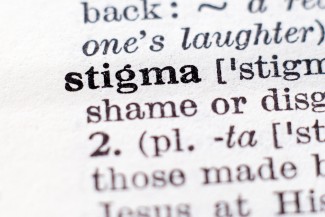Stigma Reading List

Stigma is a complex construct that is present within societies at different levels. The impact of stigma can severely damage individuals and communities. People who use substances are often on the receiving end of stigmatising attitudes and discrimination from different sources ranging from the general public to healthcare professionals and politicians.
Stigma from external sources can lead to the internalisation of these negative attitudes. This can have a negative impact on an individual’s mental wellbeing, the likelihood of them seeking support and overall treatment outcomes.
Below is a selection of resources that provide further information about what stigma is, where it comes from, the impact it can have and the ways we can challenge the stigma towards people who use substances. We also have a Network dedicated to the issue of stigma that you can join here.
- Language can have a profound way of shaping views and opinions about particular groups of people. By changing the ways we discuss substance use issues, we can start to reverse harmful stereotypes about addiction. Scottish Drug Forum’s, Moving Beyond ‘People-First' Language is a fantastic resource that describes why particular terms or phrases could be seen as stigmatising and offers alternative ways to discuss substance use issues. Particularly useful for anyone who is writing about this subject!
- Families of people who use drugs are often on the receiving end of stigmatising attitudes and behaviours. Although the consequence of stigma can be just as damaging for family members, it is often overlooked. This report by Adfam aims to improve awareness and understanding of how stigma affects family members. It provides an overview of the literature and guidance for working with families who experience stigma relating to family members substance use.
- CCSA has developed an introductory learning module as the first in a planned series of modules on the topic of stigma and substance use. These modules are developed with the needs of both the general public and professional audiences in mind. The first module, The Sting of Stigma, will introduce you to the concept of stigma, and explain why it is harmful and what its impacts are on people with substance use difficulties.
- There are many webinars that address the stigma around substance use. Some notable recordings include the Substance Use and Associated Behaviour webinar, which particularly focusses on Drug/dependency stigma and marginality, and the stigma of alcohol problems. Another, by Dr Valerie Earnshaw, examines the stigma around HIV and substance use. Finally, the National Drug and Alcohol Research Centre has hosted a webinar that looks at how stigma might be monitored and reported.
- As well as their introductory learning module, CCSA has developed a primer and infographic to increase awareness and encourage discussion around the substance use-related stigma.
- Structural stigma refers to the stigma that has been created by social structures, policies or institutions. This report provides a review of the research relating to structural stigma in health-care contexts for people with mental health and substance-related issues. Firstly, it provides an overview of the forms of structural stigma and then it goes on to describe the ways that it can be addressed in health care.
- This research study published by Kelly, J. F., Greene, M. C., and Abry, A. (2020) investigated whether random exposure to one of six common ways of describing drug‐related impairment induces systematically different judgments.
- In this excellent blog post, Simon Bratt calls us to recognise the profound impact of our linguistic choices and to wield them responsibly, with both empathy and understanding: The Power of Words: A Deep Dive into the Language of Addiction.
- While prior efforts have been made to change stigmatising language to refer to individuals with substance use disorders (SUD), little is known about the effects of stigmatising imagery. This study used qualitative methods to identify stigmatising and non-stigmatising imagery for SUD and explore the reactions of people with lived experience with SUD to SUD-related imagery.